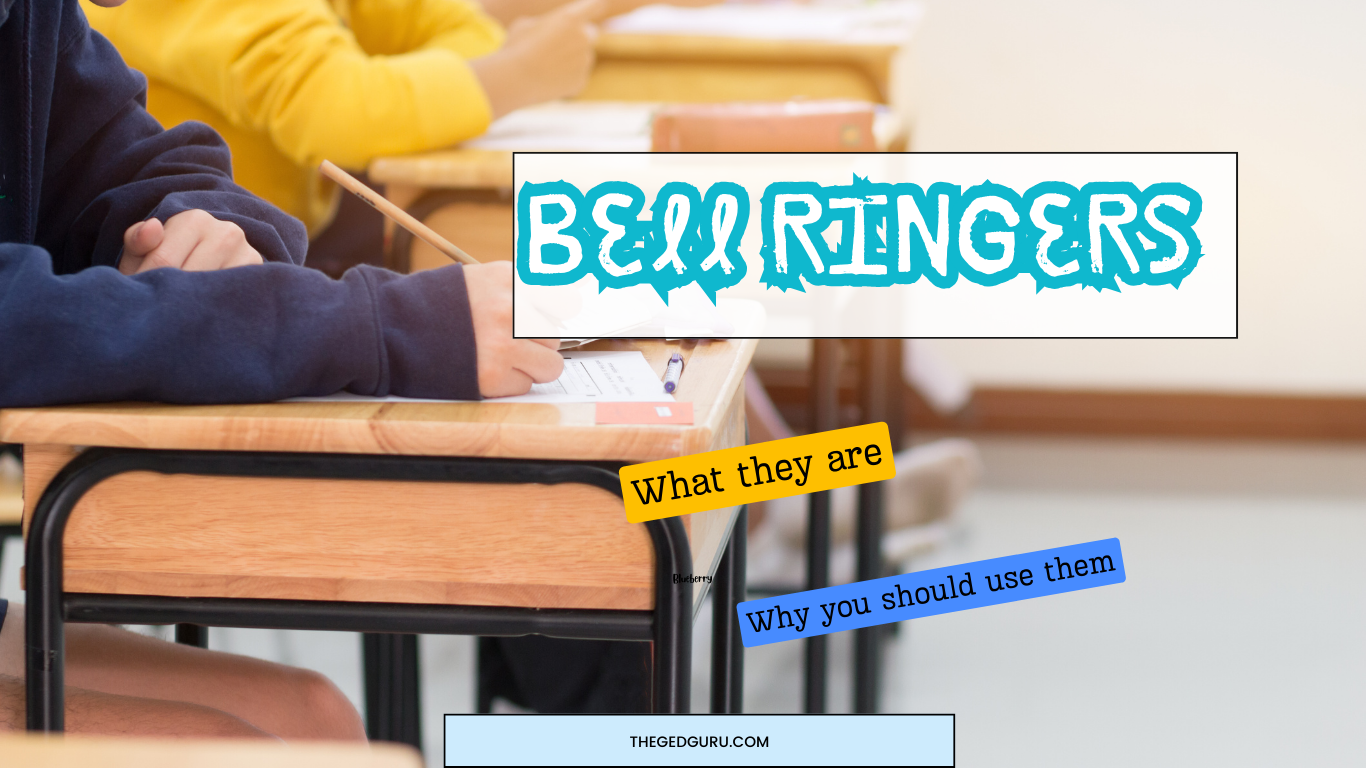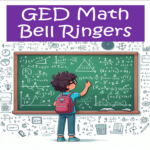Bell Ringers: What they are and Why you should use them

Bell Ringers. Even if you aren’t familiar with the term, you may have incorporated some type of bell ringer in your class at some point. You may have called the activity a jump starter or morning work, but the idea is the same no matter the name — get students engaged as soon as they walk in the door.
A bell ringer is simply a pre-prepared activity given to students at the beginning of class, and the benefits are numerous. If you haven’t started using bell ringers in your class, here are some reasons why you should start:

- Bell Ringers set the tone. As a teacher, you want to make the most of every minute you have with your students, and bell ringers are perfect for setting up a learning atmosphere. Your time, and the students’ time, is valuable, and bell ringers help to get that message across. Bell ringers can be seen like stretching before you exercise. They are just bite-size pieces of deeper learning that will take place later on.

2. Bell ringers set a productive routine for your class. Think about your morning routine. We all have one. For me, every day starts with a few things: 1) Brush teeth, 2) Take the dog out, 3) Feed the cat, 4) Coffee. The rest of the day may vary, but the first minutes of each day look the same for me. If you are consistent with your bell ringers, they will have the same feel as a regular morning routine, something that we do without thinking about it, and something familiar that sets us up for a successful day. Students will learn to expect this routine and even look forward to it if you make it a daily habit.

3. Spiral Learning. If you are an experienced teacher, you know that true learning doesn’t just happen in one class period. For students to retain information, they need to be exposed to it many times, and bell ringers allow for this type of spiral learning. You can create questions from previous lessons to check for student retention, so bell ringers can be a diagnostic and prescriptive tool. If you see that the class needs review on a certain lesson, simply make sure to include questions from that lesson on your future bell ringers or in upcoming lesson plans.

4 Student engagement. Our students have lives outside of class, so they probably have many things other than class occupying their thoughts. Bell ringers help students switch gears and get ready for the day’s lesson. They get in learning mode which helps them focus on the valuable day you have prepared for them.

5. Students self-assess. You may have a student who is sure he has conquered everything he needs to know about fractions until he meets a fraction question on a bell ringer that he can’t solve. This means that a student who may have thought he didn’t need to study fractions for an upcoming test realizes that he actually does need a little extra work. Students need to take some responsibility for their own progress, and bell ringers can help with that.
You may either make your own bell ringers or buy some pre-made ones. If you decide to make your own, keep the following in mind:
- Bell ringers should be relevant.
- Students should at least be able to attempt the questions on their own.
- They need to be given at the start of class.
- You should provide instant feedback.
- They should be something that can be done in a short amount of time.
I have a collection of bell ringers that I have created for my GED students, and you can check them out by clicking on the links below. Even if you want to make your own bell ringers, you may want to look at the ones I have created that have proved to be effective so that you can get an idea of what types of bell ringers you want to create.










